ap·pro·pri·a·tion /ə-ˌprō-prē-ˈā-shən/
noun
- the act of taking something that belongs to somebody else, especially without permission

In this section, we’ll examine the difference between cultural appropriation and appreciation by sharing many examples, including hairstyles, Halloween costumes, Blackface, sports team jerseys and names, and perhaps the most controversial, trying to appear or claiming to be racialized when you’re white.
Cultural Appropriation
Cultural appropriation is using knowledge, practices, and symbols of other cultures without knowing or respecting them.
People often commit cultural appropriation without realizing the negative impacts.
Examples of cultural appropriation include making your own version of a culturally specific work or event. Many people may interpret this as being inspired by another culture, when in reality it can actually misrepresent the culture. For example, having an “Exotic Asia“ party.
Another example is non-Blacks creating YouTube videos with a dance known as “the Harlem Shake.” The dance itself was not offensive but naming it “the Harlem Shake” was because that is the name of a completely different dance which started in historically Black Harlem.
Some people “try on” minority people’s experiences for a day by trying to put themselves in their shoes. The intentions are good; however, for example, white non-Muslims wearing a hijab cannot fully understand what being an Arab Muslim is like in a Western country. According to Ala Ahmad,
“One day’s experience cannot compare to a lifetime of being the enemy.”
There’s a lot of confusion around cultural appropriation versus cultural appreciation. Public speaker and co-founder of Byblacks.com, Camille Dundas, explains the difference between the two in the clip below.
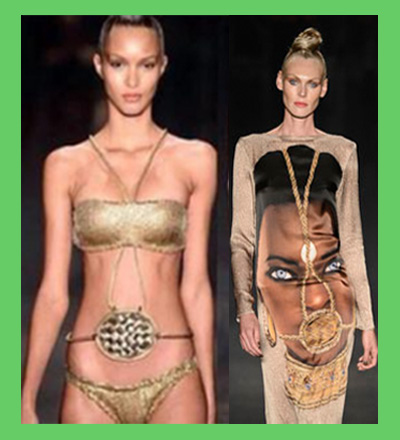
In the clip above Dundas says,
“When you’re a fashion designer and you are taking images of slavery…taking that and printing it on a dress and having a white model walk down a runway with it… that’s even worse than cultural appropriation.”
The incident Dundas was talking about involved a fashion designer named Adriana Degreas who designed clothing featuring a Black woman wearing a muzzle.


Michaelann George, Sheridan College professor and program coordinator, also shared her thoughts on the definition of cultural appropriation and how to differentiate it from appreciation. After her clip, we’ll take a look at Halloween costumes that cross the line.
Halloween
Halloween is one of the most most common times of the year for cultural appropriation to occur. Dressing up should be fun, but think about the costume you choose.
Will it offend other people? Could it be misinterpreted? If you have a gut feeling that this may be the case, you could be right. Choose something more appropriate. According to Marie Claire, wearing a costume of a marginalized culture that isn’t your own is cultural appropriation.
Examples of culturally inappropriate Halloween costumes include:
[full_width_color] [team_member name=”INDIGENOUS” role=”INDIGENOUS” img=”https://onp02.sheridanc.on.ca/wp-content/uploads/2019/04/native-american-maiden-costume.jpg”]This costume is unacceptable not only because of the costume’s name (it was originally labelled Pocahontas), but because it does not respect the history of violence and oppression towards First Nations people, inherent in the founding of both Canada and and the U.S. You are not dressing up as a character, but appropriating a culture. https://www.halloweencostumes.com/native-american-maiden-costume.html
[/team_member] [team_member name=”BLACKFACE” role=”BLACKFACE” img=”https://onp02.sheridanc.on.ca/wp-content/uploads/2019/04/Blackface-copy-copy.jpg”]People will often paint themselves dark to look like black characters. For example, in 2016, a Columbian Journalist posted this photo on Instagram and shortly had to remove it after recieving backlash from people online. Pretending to be a black person is not a costume. https://www.antoinespeaks.co.uk/what-is-blackface-racism-why-is-it-racist-black-people-are-not-costumes-here-are-4-reasons-blackface-must-stop/antoinea/
[/team_member] [team_member name=”Gypsy” role=”Gypsy” img=”https://onp02.sheridanc.on.ca/wp-content/uploads/2019/04/Gypsy.jpg”]When you first hear or see this word, you may associate it with free-spirited people, which may make you think, “This could be harmless.” Not so fast. According to the National Organization for Women (NOW), gypsy is a racial slur against Romani people, an ethnic minority group with persecution in Europe. People have used this term in the past to discriminate against and stigmatize Romani people. https://www.purecostumes.com/G10669/gypsy-adult-costume.html
[/team_member] [team_member name=”Bollywood” role=”Bollywood” img=”https://onp02.sheridanc.on.ca/wp-content/uploads/2019/04/adult-bollywood-star-costume.jpg”]“Bollywood” is a well-known genre globally, but wearing an Indian dress and calling it a Bollywood costume is culturally inappropriate. “Bollywood” is a stereotype that turns all of Indian culture into one trope. http://www.discounthalloweencostumes.com/adult-bollywood-star-costume.html
[/team_member] [team_member name=”Egyptian Queen” role=”Egyptian Queen” img=”https://onp02.sheridanc.on.ca/wp-content/uploads/2019/04/sexy-cleopatra-costume.jpeg”]The overall costume is offensive because it is stealing from another culture. However, the use of the ankh, which is what the woman in this picture is holding, is particularly offensive. The ankh was an Egyptian religious symbol that was appropriated by Christians in the 4th century CE to be used as a symbol of the Christian God. http://www.discounthalloweencostumes.com/adult-bollywood-star-costume.html
[/team_member] [team_member name=”Voodoo Witch Doctor” role=”Voodoo Witch Doctor” img=”https://onp02.sheridanc.on.ca/wp-content/uploads/2019/04/Witch-Doctor.jpeg”]The word “voodoo” is often used as a term for several religions practiced in Louisiana, Brazil, Cuba, and the Dominican Republic. Dressing as a “voodoo witch doctor” only creates harmful stereotypes for real religions. https://www.partycity.com/ca/adult-witch-doctor-costume-plus-size-P687342.html
[/team_member] [team_member name=”Day of the Dead” role=”Day of the Dead” img=”https://onp02.sheridanc.on.ca/wp-content/uploads/2019/04/pdp_sq_.jpeg”]Dia De Los Muertos is a Mexican holiday celebrated on Nov. 1, also known as All Souls Day, to honour friends and family who have passed away. Sugar skulls and calaveras are a symbol of this holiday, not for people to use as a costume. https://www.partycity.com/ca/adult-day-of-the-dead-senorita-and-day-of-the-dead-sombrero-senor-couples-costumes-G590965.html
[/team_member] [team_member name=”Geisha” role=”Geisha” img=”https://onp02.sheridanc.on.ca/wp-content/uploads/2019/04/sexy-japanese-doll-kimono-costume.jpg”]Many describe the geisha costume as “sexy.” However, it is very problematic to dress up as a stereotyped version of a cultural figure. https://www.halloweencostumes.com/womens-dragon-art-kimono-costume.html
[/team_member] [team_member name=”Terrorist” role=”Terrorist” img=”https://onp02.sheridanc.on.ca/wp-content/uploads/2019/04/Terrorist.jpg”]The Muslim religion is discriminated against more often than others due to stereotypes of terrorists. This particular outfit was posted on eBay as “Funny Middle Eastern Terrorist” and was shortly taken down from the website due to being culturally offensive. https://www.ebay.co.uk/itm/Funny-Middle-Eastern-Terrorist-Mens-Fancy-Dress-Costume-/260829838498
[/team_member] [/full_width_color][space height=”30″]
Blackface
The history of Blackface dates back to the era of minstrel shows in the U.S. in the early 1800s. White performers would use shoe polish to darken their skin in order to portray and mimic enslaved Africans. It was also common for these actors to apply bright red lipstick. David Leonard, chair of Washington State University’s department of critical culture, gender and race studies, wrote,

“Blackface is part of a history of dehumanisation, of denied citizenship, and of efforts to excuse and justify state violence.”
URL: https://www.huffpost.com/entry/just-say-no-to-blackface_b_1752139
However, issues of Blackface keep popping up today. In the U.S., multiple photos of politicians wearing Blackface have surfaced. This includes Democratic Virginia Gov. Ralph Northam, featured in his 1984 yearbook for Eastern Virginia Medical school. One person was dressed in Blackface and another in the KKK’s signature white hood and robes. Northam faced backlash and intense pressure to step down. Democratic presidential candidates, who campaigned with Northam, all urged him to resign. Despite the immense pressure, he did not. Attorney General Mark R. Herring also admitted that he wore Blackface as a student in the 1980s, to imitate famous African Americans.

Racist Fashion
And, for inexplicable reasons, Blackface keeps popping up as a controversy in fashion.
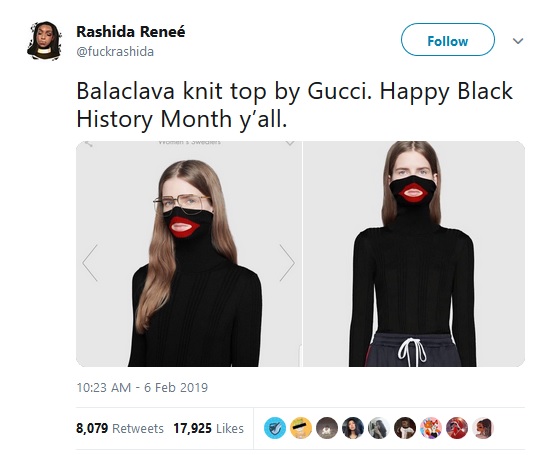
In February of 2019, the designer clothing company Gucci revealed a black coloured turtleneck sweater, that when pulled over the wearer’s mouth, had an open area for the mouth to breath. Unfortunately, that area had a red lip design around it, which gave the impression of Blackface. The company immediately apologized after receiving backlash on social media platforms such as Twitter. This controversy could not have been more untimely because February is widely celebrated as Black History Month, to which, according to the article, one Twitter user noted “someone obviously didnt let gucci know its Black HISTORY Month and NOT BLACKFACE Month.”
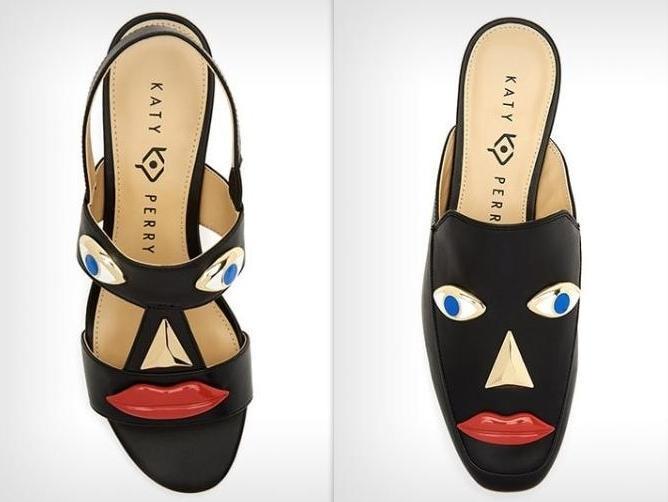
A collection of shoes endorsed by music artist Katy Perry was immediately recalled after many people complained the design resembled Blackface. Critics said if Katy Perry and her design associates had a more diverse range of employees, this could have potentially been avoided and, at some point, someone should have noticed the design might elicit negative and harmful emotions from part of the consumer base.
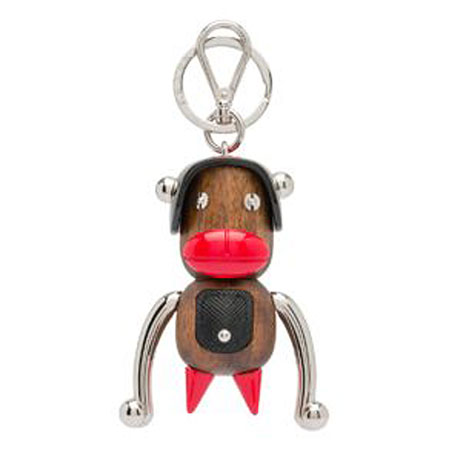
In December of 2018, Prada, the Italian fashion company, had to recall a keychain design from its “Pradamalia” collection due to the design being a small monkey with large red lips, a design that invoked Blackface imagery. The company released an official apology shortly after, and promised in its statement that it would be creating a diversity training program and an advisory council to avoid future mistakes of this nature.
Dream Catchers
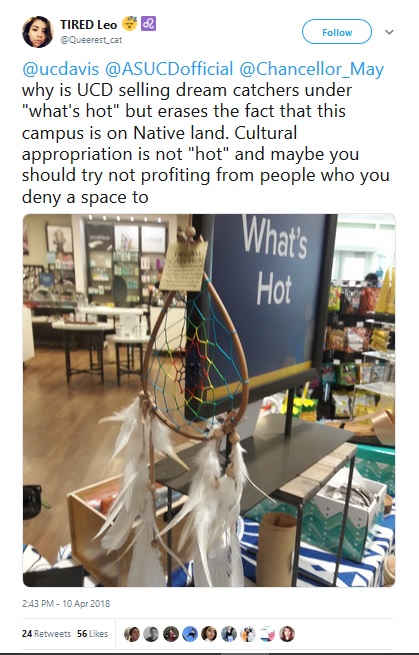
Objects can also have deep meaning with specific cultures. In First Nations culture, dream catchers are meant for people to hang in rooms to protect them from experiencing bad dreams and to experience good dreams instead. Using dream catchers is a Native American tradition which has been around for generations. There has been controversy, however, over non-Natives selling dream catchers.
In Spring 2018, University of California Davis removed dream catchers from their stores after many students complained about cultural appropriation. One student took notice that UCD was on Native lands and that dream catchers were in the “what’s hot” section of its store.
Two days later, UC Davis Stores responded to her tweet saying,
“Thank you for bringing this to our attention. We have removed the item from the UC Davis Stores.”
In Canada, there was a similar situation with a different ending. Jamie McGean, a Kanien’khea First Nations member, went shopping at a Dollarama store and noticed dream catchers being sold as part of Canada’s 150th birthday items. This was a shock to him because dream catchers are created in sacred ceremonies, and they are gifts not for personal gain or profit. When McGean went to several Dollarama stores he saw that all of them were selling dream catchers and he wrote a letter to head office. However, store owners decided to keep selling them because they were popular with many customers.

Hairstyles
Hairstyles such as dreadlocks and cornrows are often seen as cultural appropriation when worn by someone who is not Black because they are associated with African-American culture. Michaelann George explains why it’s an issue in the clip below.
This link has more on the controversy over white women wearing cornrows.
Native Headdress
When non-native people wear headdresses it is also cultural appropriation. This is because Native headdresses worn by people of Plains Nations are usually restricted to men who have done things to earn the right to wear them. However, there have been many examples of women wearing headdresses to look sexy. According to Marisa Wood’s “Cultural Appropriation and the Plains’ Indian Headdress”, people may wear headdresses to try to draw attention to themselves and to look sexy. This strips the spiritual significance of headdresses because they are not meant to be sexy costumes.
Social media blew up when a woman showed up at Toronto Pearson Airport wearing a huge native headdress. Her image was captured in a since deleted tweet that read,
“Arrivals. Airport. Toronto. Looks like this Canadian didn’t get the memo of how incredibly wrong this is.”
The headdresses that are most culturally appropriative are the ones made of eagle feathers. Native Americans compare the wearing of this particular headdress to wearing a United States Medal of Honor without having been awarded the honour. Many people use their lack of understanding of the spiritual significance of headdresses as an excuse for wearing them, and then get off easy for doing so. That, however, doesn’t lessen the impact it has on Native Americans.
Indigenous Appropriation
Cultural appropriation can often be interpreted differently by different people. Connie LeGrande is a Cree artist accused of cultural appropriation for including Inuk throat singing on her new album.
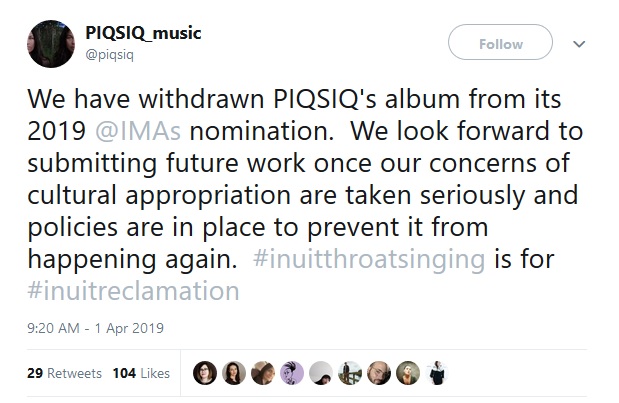
Throat singers Kelly Fraser and Tanya Tagaq are upset that a non-lnuk throat artist was up for an award alongside them:
“ I have respectfully asked the woman to stop throat singing,” said Fraser.
However, LeGrande refused to withdraw from the Indigenous Music Awards because she believes the sounds she makes are distinct from the Inuit cultural practice.
Several Inuk performers withdrew their albums from the 2019 IMAs as a result.

Team Jerseys
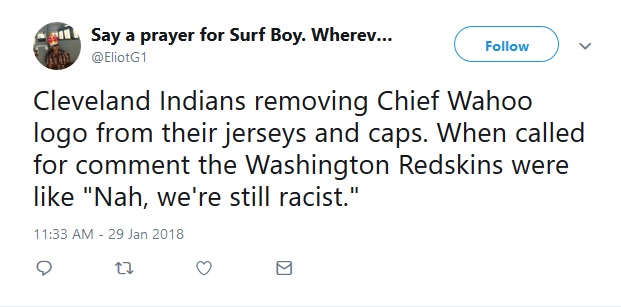
One of the most infamous examples of mainstream racism is the continued use of racist terms for sports teams, such as the name “Redskins” for a U.S. National Football team. Even after decades of backlash, the team has been allowed to keep the name and its logo depicting a Native American mascot.
According to this article, The Washington Redskins isn’t the only team with a problematic name. Other examples include the Chicago Blackhawks, Kansas City Chiefs, and the San Diego State University Aztecs. All of these names can be considered racist as they appropriate or stereotype a different culture. After facing much criticism, The Cleveland Indians updated their uniform to remove the red-faced caricature of a Native American, but they didn’t change their name.
In an article posted to CBC, the controversy over a Sudbury hockey team’s jersey was highlighted. The logo is that of a First Nations man with a feathered head dress on. Lynne Courchene is a member of the Sagkeeng First Nation in Manitoba and her family brought the issue to the Ontario Human Rights Tribunal. In a Facebook post, she requested the provincial ministry of education
“ban all offensive First Nations logos and names from all Ontario schools as the effects of these logos/names are harmful to our children. This also includes a total ban of all clothing/accessories that bear these logos.”
Minister Mitzie Hunter made a statement to CBC following the request and vowed to work with Indigenous partners to review all team names and logos along with team mascots. Courchene and her husband are now scheduled to attend a mediation session with the ministry.
On April 12, 2019, McGill university announced that it will be removing the Redmen name for the men’s varsity sports team. This happened after students protested that the name was offensive to Indigenous people and caused pain to the Indigenous students at the university.
TransRacial
Transracial is the term used to describe a person who believes their racial identity does not match their racial group by birth. If one is born white but appears to be a different race, for example, they may refer to themselves as transracial. However, some also see this as cultural appropriation.
The first known use of the term was in 1970, although it became well-known once Rachel Dolezal, former president of the Spokane, Washington chapter of the NAACP, made headlines in June 2015.
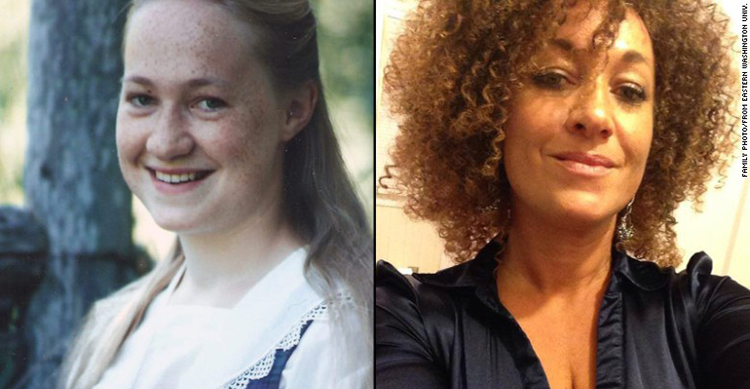
After claiming to be a Black woman for years, Dolazel left her NAACP job in June 2015 when her parents revealed she was white. Dolazel then claimed to be transracial. According to Baz Dreisinger, author of Near Black: White-to-Black Passing in American Culture, many people have very-black-is-black and very-white-is-white points of view and are surprised scenarios like Dolezal’s come up. Dolezal’s parents adopted three African-American children and one Haitian child. This is partly why Dolezal passed as Black despite having no African-American heritage. Nobody asked her parents about her race. Therefore, it was never discussed until The Coeur d’Alene Press contacted Dolezal’s parents.
The true meaning of transracial relates to people who were raised in homes different in cultures of their birth. According to Ellie Freeman, the difference between actual transracial people and people such as Dolezal is that actual transracial people experienced trauma and institutionalized racism. Dolazel, however, did not fully experience being Black.
Tanned or Appropriating?
Emma Hallberg, a Swedish social media influencer, is popular because of her beauty tutorials on Instagram and YouTube. Prior to November 2018, many of Hallberg’s 245,000 followers thought she was Black or mixed. However, someone eventually posted a picture of her with lighter skin and straight hair. People accused her of pretending to be Black to get social media followers.


Hallberg eventually told Teen Vogue magazine that she tried to look like herself and to share her make-up looks and outfits. Her intention never was to look like a Black woman. She used makeup foundation darker than her skin tone to hide her acne and scars on her face. She didn’t understand why Black women were upset with her. She also claimed that her skin gets tanned very easily in the sun.
When one of her fans asked her if she was pretending to be a coloured person, she claimed that she never tried to look or be Black. However, it is not about if she intended to look Black, but how she impacted Black women by appropriating their culture.
With Dolezal’s and Hallberg’s examples in mind, sometimes even the most extreme examples of cultural appropriation are not done intentionally. That doesn’t mean they don’t cause harm or aren’t offensive.
In the next section we’ll examine colourism and its effects, including skin lightening. Check that out in the Colour of Racism.